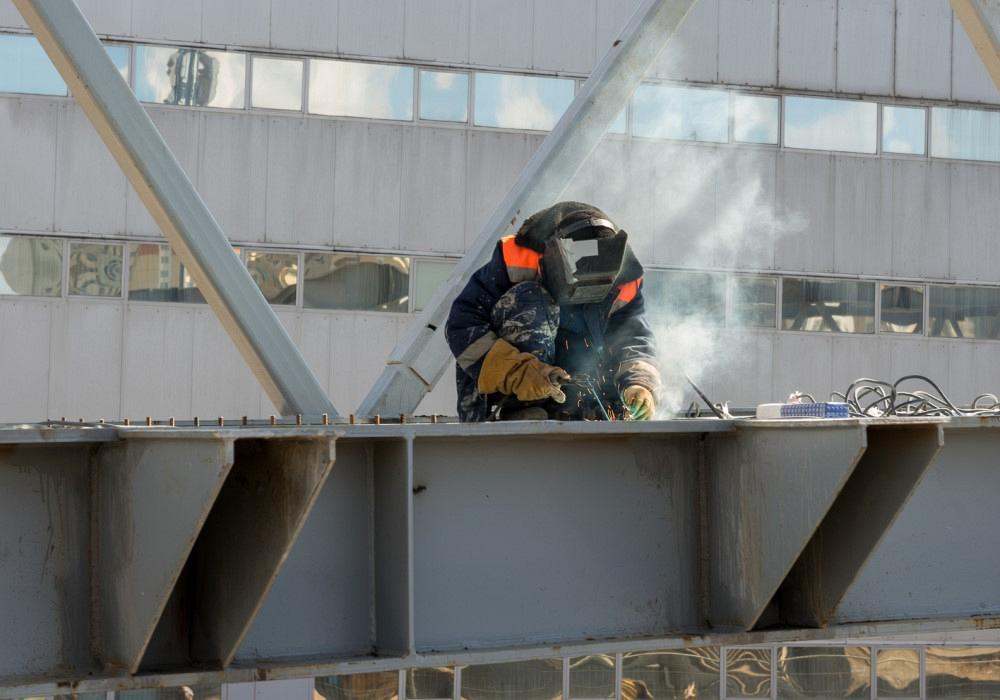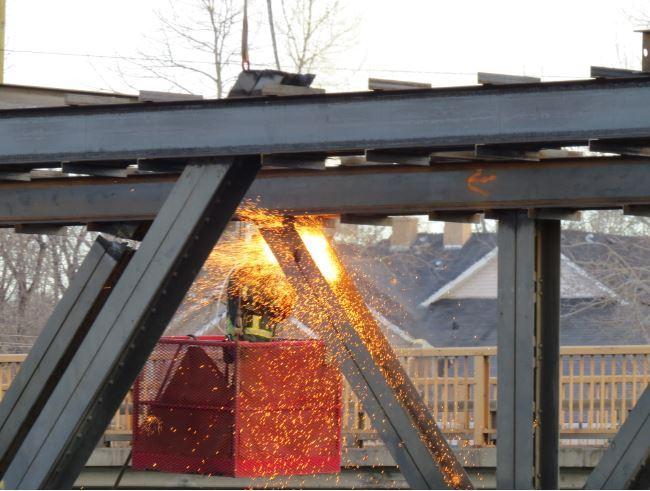Contributing Writer
- FMA
- The Fabricator
- FABTECH
- Canadian Metalworking
Categories
- Additive Manufacturing
- Aluminum Welding
- Arc Welding
- Assembly and Joining
- Automation and Robotics
- Bending and Forming
- Consumables
- Cutting and Weld Prep
- Electric Vehicles
- En Español
- Finishing
- Hydroforming
- Laser Cutting
- Laser Welding
- Machining
- Manufacturing Software
- Materials Handling
- Metals/Materials
- Oxyfuel Cutting
- Plasma Cutting
- Power Tools
- Punching and Other Holemaking
- Roll Forming
- Safety
- Sawing
- Shearing
- Shop Management
- Testing and Measuring
- Tube and Pipe Fabrication
- Tube and Pipe Production
- Waterjet Cutting
Industry Directory
Webcasts
Podcasts
FAB 40
Advertise
Subscribe
Account Login
Search
Federal Highway Administration seeks a more comprehensive welding code
The agency looks for a new code covering such things as light poles, sign structures
- By Stephen Barlas
- January 8, 2021

The feds look for a more comprehensive welding code to cover such things as light poles and sign structures. Getty Images
Federal government officials have recently proposed a number of final regulatory changes, some of which affect metalworking companies.
For instance, the Federal Highway Administration (FHWA) wants to designate a more comprehensive welding code as part of the design standards that state highway departments need to adhere to for new construction, reconstruction, and resurfacing of roads and bridges, which are part of the National Highway System.
States would have to comply with the 2016 second printing of the AWS D1.1/D1.1M:2015 Structural Welding Code—Steel. It replaces AASHTO/AWS D1.5M/D1.5: 2015-AMD1, Bridge Welding Code as a minimum design code.
The reason for the change is the Structural Welding Code covers more projects requiring welding, including light poles, high mast towers, sign structures, guardrail systems, and even pedestrian bridges. Because these other product types are not covered by the Bridge Welding Code, and because they are in or over the right-of-way, they should be fabricated or manufactured to a minimum design standard. FHWA proposes the Structural Welding Code—Steel.
FHWA’s proposed switch is a little confusing, however. The American Welding Society (AWS) has already updated the Bridge Welding Code. But the FHWA won’t designate it as a minimum standard until the American Association of State Highway and Transportation Officials (AASHTO) has gone through the complete AWS consensus review and approval process and final changes are incorporated into the next published edition of the AASHTO/AWS D1.5M/D1.5 Bridge Welding Code. So the FHWA proposes to allow the use of the interim Bridge Welding revisions, but not to adopt them as a minimum design standard.
Neither the FHWA, AASHTO, or the AWS responded to queries asking about the future meshing of the two welding codes. That might get sorted out in a final rule, if and when one is published.
Steel Containers for Hazardous Materials
The U.S. Department of Transportation finalized a designation of Welding, Brazing, and Fusing Qualifications in its hazardous materials rules as part of a much bigger final rule from the Pipeline and Hazardous Materials Safety Administration (PHMSA). The welding code is found in the 2017 editions of the ASME BPVC Section IX and expands acceptable testing methods and clarifies welder personnel qualification requirements. The BPVC applies to boilers and pressure vessels.
Another metal products provision in this final PHMSA rule affects steel drums that are reconditioned. The Reusable Industrial Packaging Association (RIPA) had submitted a request to change current regulations so that labels could be substantially removed, rather than completely removed, during the reconditioning of metal drums. The PHMSA came back in a proposed rule and said they would revise the statute to allow up to 10% of tightly adhering paint, mill scale, and rust to remain on the surface area of a drum being reconditioned.
The RIPA protested that it is technically impossible to meet a requirement that entails the removal of 90% of tightly adhering paint, mill scale, and rust from the entire surface area of every steel drum.
The RIPA also contended that the limit of 10% surface area for exterior coatings is arbitrary and will be difficult to enforce. The RIPA argued the statute be revised to say: “Cleaning to base material of construction, with all former contents, internal and external corrosion removed, and any external coatings and labels sufficiently removed to expose any metal deterioration which adversely affects transportation safety.”
In the final rule published at the end of November, the PHMSA backed off and essentially adopted the RIPA’s preferred language.
subscribe now

The Fabricator is North America's leading magazine for the metal forming and fabricating industry. The magazine delivers the news, technical articles, and case histories that enable fabricators to do their jobs more efficiently. The Fabricator has served the industry since 1970.
start your free subscriptionAbout the Author

Stephen Barlas
- Stay connected from anywhere

Easily access valuable industry resources now with full access to the digital edition of The Fabricator.

Easily access valuable industry resources now with full access to the digital edition of The Welder.

Easily access valuable industry resources now with full access to the digital edition of The Tube and Pipe Journal.
- Podcasting
- Podcast:
- The Fabricator Podcast
- Published:
- 04/30/2024
- Running Time:
- 53:00
Seth Feldman of Iowa-based Wertzbaugher Services joins The Fabricator Podcast to offer his take as a Gen Zer...
- Trending Articles
JM Steel triples capacity for solar energy projects at Pennsylvania facility

Fabricating favorite childhood memories

How laser and TIG welding coexist in the modern job shop

Robotic welding sets up small-batch manufacturer for future growth

Ultra Tool and Manufacturing adds 2D laser system

- Industry Events
Pipe and Tube Conference
- May 21 - 22, 2024
- Omaha, NE
World-Class Roll Forming Workshop
- June 5 - 6, 2024
- Louisville, KY
Advanced Laser Application Workshop
- June 25 - 27, 2024
- Novi, MI
Precision Press Brake Certificate Course
- July 31 - August 1, 2024
- Elgin,



























